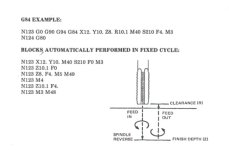Maverick302
Aluminum
- Joined
- Dec 24, 2018
First off, I apologize if this topic has been beaten to death, but I have done a fair amount of searching and haven't landed on a lot of concrete information. I have a Fadal 3016 without rigid tapping. In the future I plan to add it, but for now, what are my best options? I do low quantity work so versatility is key. It seems the main methods I could use are:
- Compression/tension heads - I get how these could work in through holes, but aren't blind holes a problem?
- Thread milling - How small of a thread size is realistic? Does cost of tooling really add up relying on this method? Any other caveats?
- Manual tapping on drill press with self-reversing clutched head - this is an option, but I would imagine tapping in the machine is better if possible


